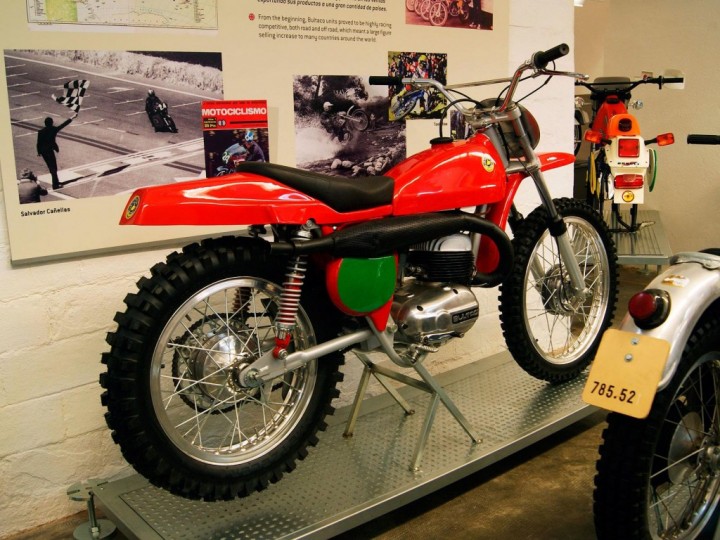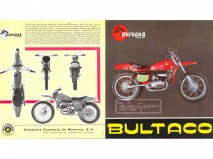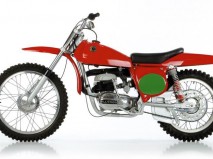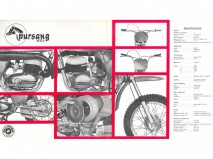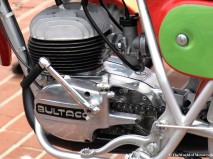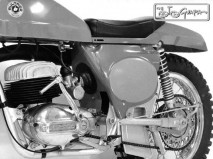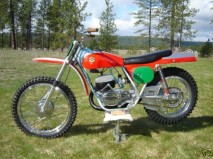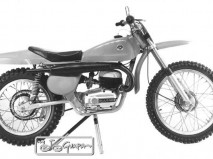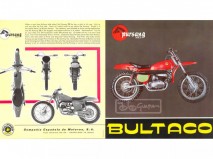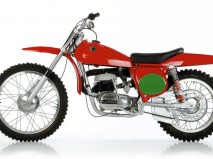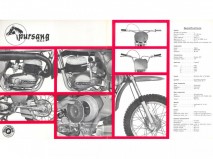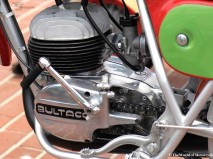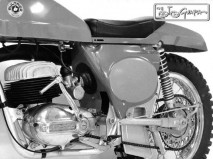1967 Bultaco Pursang Mk2 250
St.Adria de Besos (Barcelona)
Fernando de Portugal.
Year of production: 1967
Engine capacity: 244 cc
Power: 34 hp at 8000 rev. / min
Carburetor: AMAL 30
Bore and Stroke: 72 x 60 mm
5-speed
Weight: 102 kg
Pursang was Bultaco motorcycle production between 1967 and 1981, designed specifically for those who practiced motocross. Throughout their lives, they produced a variety of commercial models with engine capacity from 125 to 400 cm3, although the most popular were the 250 and 370 cc.
The common characteristics of all versions were a two-stroke engine with a single cylinder, air cooling, a drum brake and conventional shock absorbers of the front and rear forks.
During the decades of the 1960s and 1970s, Pursang was one of the most highly valuable motocross bikes because it had a reliable and powerful engine and a very stable chassis, offering high performance and reliability.
Francesc Xavier Bultó, the founder and the owner of Bultaco began to get interest in motocross after he had seen the Manresa race, in which his nephew Oriol Puig Bultó took part on his Tralla 101.
As early as in 1960 the first model of Bultaco appeared for this specific discipline: Sherpa S, made on the base of Tralla 101.
Within the framework of preparing for Motocross Internacional de Barcelona, which took place in the same year on Circuit de Pedralbes, Bultó asked a distinguished British specialist Teylor Matterson to send him two prominent racers, motocross-men and motorcycle producers, the brothers Don and Dereck Rickman, for whom he prepared Tralla with a 175 cc engine. The British were impressed by the engine, but they did not like the chassis. Nevertheless, Don won the race, and in concurrence with Bultó he returned to England to get ready a new chassis for Bultaco’s motors.
As a consequence in 1964 a motorcycle was made, which was named Métisse ("Mestiza" in French), as its components were of different origin. Both parties made an agreement, according to which Rickman installed the engine Bultaco on the Metisse and sold these motorcycles in the United Kingdom, and the Bultaco factory in Catalonia sold them all over the world. It was the first motorcycle designed for European market, while its predecessor Sherpa S would go to North America.
The first sales of Metisse began since 1965, but already since 1967 Rickman was impressed by demand.
Bultaco decided to develop their in-house chassis.
This motorcycle got the name Pursang («Thoroughbred» in French). The name came from Bultó, who said, that the company Bultaco would not make hybrid, but only thoroughbred copies! Even after the breach of the mutual relations Don Rickman agreed, that Pursang was a principal competitor of Metisse, having admitted it more stylish and better than Metisse.
The first MK2 of 1967 manufacturing year with its innovative form laid the foundation of the line, which continued till the factory was shut down. Afterwards MK3, MK4 and MK5 were launched on the market that collected the inheritance of the competitions every season between 1968 and 1971. Later on MK6 (1973) was serially produced in different quantities and MK7 in the same year. In 1975 MK8 came into being, which brought many new changes (especially concerning the suspension and brake system). Between 1976 and 1979 MK9, MK10, MK11, MK12 (known as Everts in order to be the copy of the official brand of Harry Everts) and finally MK15 during the period of crisis were made.
The MKII Pursang would be a major change from the Rickman inspired by MKI Pursang and only the engine would remain similar. The wheelbase was extended over 1" and the body work was distinctively square, therefore many riders called the Pursang the “Boat-tail” for its similarity to a sailing ship. Both a motocross model (21" front wheel) and a scrambles model (19" front wheel) were available in America.
As for motocross, it could easily be argued that Bultaco went the wrong direction as the increased power was rather peak and the longer wheelbase made quick changes of directions difficult. Fortunately, this proved to be just what scramble riders in America wanted for the higher speed and smoother tracks. The MKII developed 34 horsepower, 5 horsepower more than many of its European competitors. The fiberglass body work was absolutely beautiful, but unfortunately was easily damaged the first time the rider would fall down. The high mounted pipe also over-heated the rider’s right leg and bottom and would give way to a low mounted pipe the next year.
Although nobody won the world motocross championship on this motorcycle, they got numerous victories at the national championships and international competitions. Such pilots as Jim Pomeroy, Bengt Oberg and Harry Everts were very famous and won several Grand-prix.


